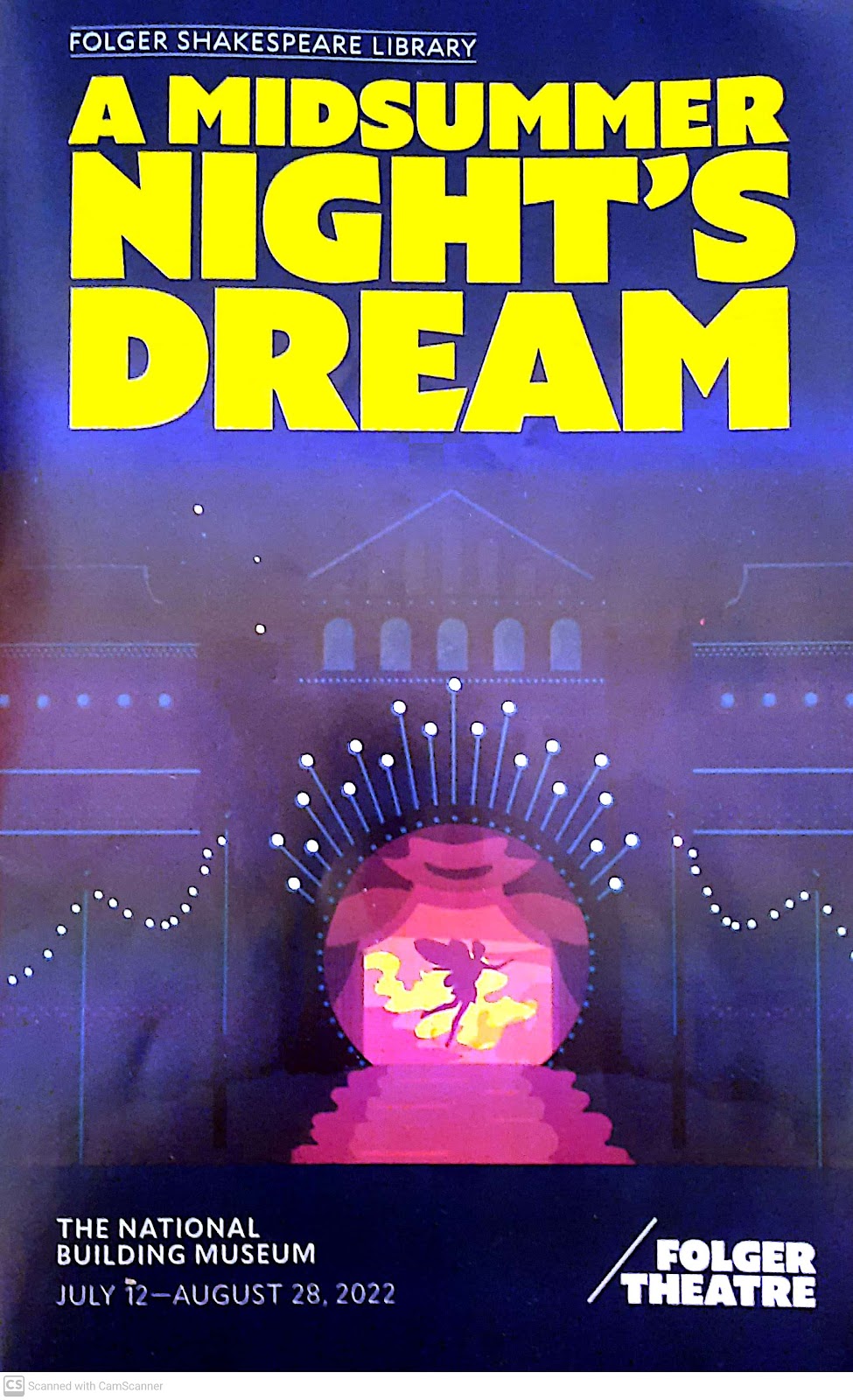A Midsummer Night's Dream, Folger Theatre, Washington, DC
Shakespeare’s A Midsummer Night’s Dream is many
things: a comedy, a romance, a fantasy, even a revenge drama. The most often
produced of Shakespeare’s plays, it has always been a fan favorite. I had my
own experiences with it, once upon a time, many, many years ago, when I acted
in a college production of it – as Peter Quince, the carpenter who directs “the
play within the play.”
I have never been a Shakespeare purist. I celebrate
colorblind casting and have seen well-executed performances by women playing
male characters. (Remember, all of Shakespeare’s plays were originally staged
with men playing all of the roles.) I’ve seen successful productions that were
set in different time periods. I remember a touring production of Much Ado
About Nothing set in 1950s Cuba that I saw in Durham, NC, over 30 years
ago.
But this “adaptation” of Shakespeare’s play, produced by the
Washington’s Folger Theatre at the National Building Museum this summer, was
“impure” enough to bring out a bit of the purist in me. As adapted and directed by Victor Malana Maog, this 90-minute Midsummer goes too far – rearranging
scenes (the play starts with Act I, Scene 2, followed by Act I, Scene 1),
switching characters’ genders (Titania puts her spell on Oberon rather than
vice versa), interpolating contemporary expressions and including references
based on the race of the actor (at least twice, the African American actor
playing Bottom mentions “Black baby Jesus”), and using modern music (an
instrumental version of “Dream a Little Dream of Me” plays at the beginning of
the play and several times afterward). I don’t know the play well enough to
determine what scenes may have been compressed or cut, but to get the running
time down to 90 minutes, there must have been some editing.
Recently there has been coverage of an unauthorized
production of Lin-Manuel Miranda’s Hamilton by a church in Texas, in
which specific conservative religious content was inserted, antithetical to the
messaging of the iconic musical. Miranda, appropriately, sued to stop the
production. I was reminded of that during this Midsummer. Were he alive
today, I would encourage Shakespeare to file a similar suit.
For those who may be unfamiliar with the play, a conflict
between the king and queen of the fairies coincides with preparations for a
royal wedding. A group of tradesmen prepare a play to be presented as part of
the wedding celebration. Caught up in this madness is a pair of young couples involved
in a romantic triangle. The fairies distribute magical potions to give one of
the tradesmen the head of an ass and causes the fairy king (this is where the
characters are changed) to fall in love with the ass when he awakens from his
sleep. Similarly, misdirecting the potion on the young lovers changes their
dynamic, confusing matters even more. Everything comes to a happy ending as the
fairy king and queen reunite and the royal wedding takes place, followed by the
tradesmen’s performance.
The design team included Tony Cisek (production), Jim Hunter
(festival stage), Olivera Gajic (costumes), Yael Lubetzky (lighting), and
Brandon Wolcott (sound and composer). The production was visually striking,
making excellent use of the “playhouse” (festival stage) constructed within the
cavernous space of the National Building Museum. The costumes are a combination
of contemporary and fantasy, sometimes overpowering the action. Because this
was an afternoon matinee in a space filled with natural light, lighting effects
had minimal impact. The sound was tricky to balance in the unusual space.
The acting ranged from the bloviating of Jacob Ming-Trent as
Bottom to the fire of Renea S. Brown as Helena, with more falling toward the
overacting side of the continuum. Danaya Esperanza’s Puck demonstrated a mischievous
and mysterious air, even when bouncing about a purple balloon at the beginning
and ending of the performance. Since I once played the role, I paid special
attention to John-Alexander Sakelos as Peter Quince and found his performance engaging.
(I can relate to the frustrated director working with inexperienced and inept
actors.) John Floyd as Flute and Brit Herring as Snout performed their roles in
the play-within-the-play (Thisbe and Wall, respectively) with great energy.
The cast members threw themselves into this director’s adaptation
and may be admired for that, no matter how misguided his vision. What is the
point of the gender-bending switch, so that Oberon and not Titania falls in
love with Bottom? Oberon’s entrance in a strapless purple gown with a long train is
certainly startling, but the face-off between Oberon in his red gown and
Titania in her yellow (with an even longer train) becomes ludicrous.
The Folger Shakespeare Library has the largest Shakespeare
collection in the world and has always been a standard for Shakespearean
interpretation. As such, this production of the Folger’s Theatre challenges my
understanding of that historic relationship.




Comments
Post a Comment